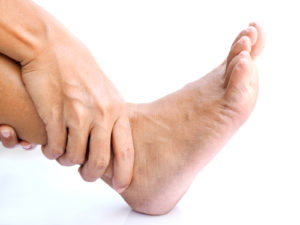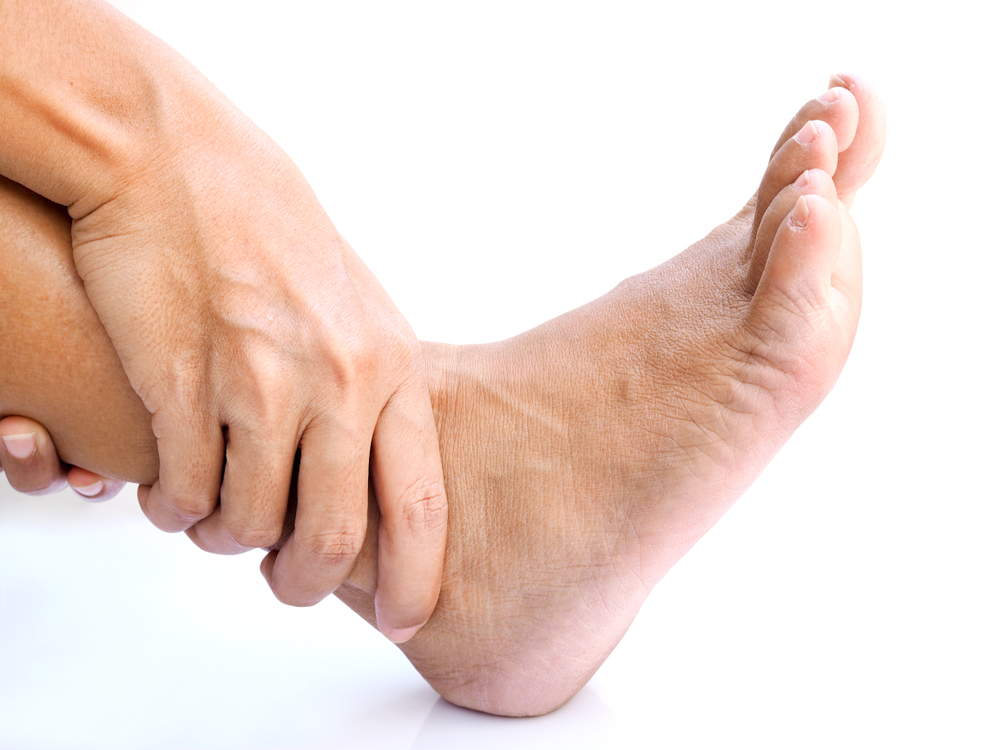Arthritis is a very common problem in the foot and ankle area and can occur in different locations. Because the foot has so many bones, there are many joints that can become painful.

Symptoms
First, it is important to understand what the symptoms of arthritis are. Symptoms tend to present as a deep, dull type of pain that occurs when you first get up in the morning, Then after you take a few steps, it can gradually get better. As the arthritis becomes more severe, it can present all the time, particularly when you’re active. Understand that arthritis occurs when the cartilage that lines the joint becomes worn down and thinner. In severe situations it can wear down to bone. Cartilage is very slick- even slicker than ice! It acts that way to let your joints move more easily.
Causes
There are a multitude of causes that can result in arthritis. It could be from gout attacks, where inflammation in the joints destroys the cartilage, or even rheumatoid arthritis, where patients have autoimmune diseases that can affect the joints.
There may have even been an injury to the joint or bone that caused the cartilage to be damaged. This is especially common in the ankle joint in the case of someone who is a chronic ankle sprainer or has had an ankle fracture. All these conditions can be called “secondary arthritis” as they are related to another issue.
For many that suffer from arthritis, it is commonly referred to as primary arthritis, meaning there is no direct cause. As we age from using our joints, the cartilage tends to wear down
Lastly, the most overlooked cause is foot structure. Very few doctors are trained to evaluate foot structure and foot biomechanics. Some foot types, particularly flat feet, might lend themselves to wearing down joints more than feet that have a normal biomechanical structure.
Where does arthritis occur most commonly?
It occurs most commonly in the great toe joint, ankle and midfoot. In the great toe, it will frequently cause a stiff toe joint, referred to as Hallux Rigidus. It can also occur in the midfoot area, halfway between the toes and the ankle in the arch area. This is also more common as we get older. Finally, it can occur in the ankle joint, especially if you have had multiple ankle sprains, or if you have any kind of history of ankle fracture- this lends itself to a greater possibility of having ankle arthritis at some point in your life.
Five things you can do
- Avoid inflammatory foods: Foods high in sugars and carbohydrates should be reduced. Why? Because they create inflammation in your body. Breads, sugar and white flour should be avoided. Also watch out for fructose as this is used in many beverages such as fruit juices and is probably worse than just scarfing down a candy bar. Instead of fruit juice, choose to eat the actual fruit as it’s much healthier for you. This will also help keep your weight down.
- Exercise: Yes, that is right, keep moving. Maybe if you used to run and it bothers you too much, consider biking or walking. You may want to take on swimming or other activities. Make sure to modify the frequency and duration because motion helps your body create more growth hormones which can help repair your joints.
- Consider supplements: Supplements such as Turmeric, Sam-e , Hyaluronic Acid and Collagen may also be effective and help fight inflammation.
- Avoid anti-inflammatories: While they may make you feel good today, the long-term effects are negative for your joint health. An exception to this would be if you have an autoimmune disease such as rheumatoid arthritis that is managed by your doctor.
- Use more supportive shoes: If you think you may be an overpronator, meaning you have flat feet, supportive shoes should be considered. You may also want to use an inexpensive over the counter arch supports.
Treatment
- Support the foot and ankle: Oftentimes orthotics are recommended as they are custom-made inserts that go in the shoes. They are especially important to help stabilize the bony areas that can lend themselves to arthritis.
- Repair and restore the joint: At Anderson Podiatry Center, we do this using stemcell treatment. Regenerative medicine is something we have been using now for over a decade and has been extremely useful for ankle joint problems, great toe joint pain, and pain in the midfoot area and the mid arch. It has proven to show improvement 80-90% of the time.
- Block your ability to feel the pain: We do this by shutting off pain signals to the brain. In some cases, especially if the arthritis is in the midfoot or up by the ankle, we can remove one or two branches in the lower leg that block your ability to feel the arthritic pain in your foot or ankle. This is also especially useful and has prevented many patients from going through ankle replacement surgery or ankle fusion surgeries (which have a significant risk factor and recovery time).
- Joint surgery: In the worst-case scenarios, when all else fails, there may be a need for revision of a joint by scoping it in the example of an ankle joint. Or finally a joint replacement or fusion.
In summary, if you have these problems, it is important to understand that there’s a lot that you can do to repair your condition. And at Anderson Podiatry Center, we can offer non-surgical approaches and low invasive procedures such as stem cell or nerve resection, which may avoid more major joint replacement surgeries. Do not assume that you have to have an ankle joint replacement or other joints fused to treat your arthritis. Consider the options that you can do first, and if you are still struggling and want to get back to full activity, consider our unique approach.



